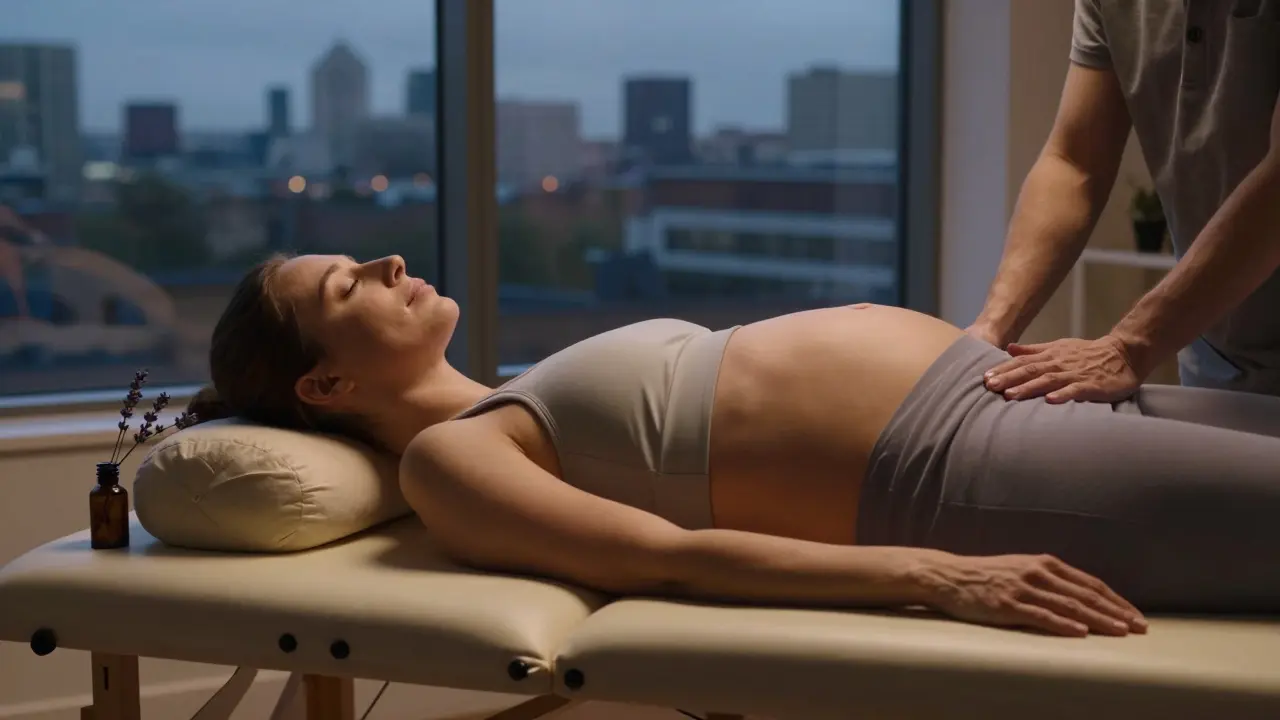Pregnancy Massage London: What You Need to Know Before Booking
Expecting a baby is exciting, but your body can feel like a circus of aches. A good pregnancy massage can melt the tension, improve circulation, and help you sleep better. In London, you’ve got plenty of options, but not all therapists know how to work safely with a growing belly.
Why a Prenatal Massage Matters
When you’re pregnant, hormones loosen your joints and fluids build up in your tissues. A skilled prenatal massage targets the lower back, hips, and legs to ease that “I‑can’t‑sit‑still” feeling. It also reduces swelling by encouraging lymphatic flow – a big win if you’ve ever dealt with puffy ankles.
Beyond the physical relief, a calming massage lowers cortisol, the stress hormone, and nudges up serotonin, so you feel happier. Many moms‑to‑be report fewer headaches and a smoother labour when they keep up regular sessions.
How to Choose a Safe Therapist in London
First, look for certifications like the British Association of Massage Therapists (BAMT) or the Association of Massage Therapists (AMT) that list prenatal training. A therapist should ask about your due date, any complications, and where you’re most uncomfortable before starting.
Ask about the pressure they’ll use. You’ll want a gentle to moderate touch, especially in the first trimester. Expect the therapist to place a pillow under your knees and a curl‑up pillow for your belly – never lie flat on your back after the first 20 weeks.
Check reviews that mention pregnancy clients. Sites like Trustpilot or Google often have real feedback about how comfy the space is, whether the therapist respects your privacy, and if they keep the room warm (important for pregnant bodies).
Typical Prices and Booking Tips
London prices vary by neighbourhood and therapist experience. Expect to pay anywhere from £60 to £120 for a 60‑minute session. Some specialist prenatal studios charge a premium of £130‑£150, but they often include a consultation and after‑care advice.
Book at least a week ahead, especially if you want a weekend slot. Many places offer online calendars where you can filter for “prenatal” or “pregnancy massage.” If you’re on a budget, look for off‑peak discounts – early mornings or weekdays are usually cheaper.
When you call, ask if the therapist uses hypoallergenic oils or avoids scented products. Pregnant skin can be sensitive, so many clinics favor a light almond or grapeseed oil, or even a dry‑massage technique that uses minimal lotion.
What to Expect During Your Session
You’ll start on a side‑lying table with cushions supporting your belly and knees. The therapist will warm up the muscles with gentle strokes, then focus on the back, hips, and legs. You might feel a light pulling sensation as they work around your joints – that’s normal and should never be painful.
After the massage, drink plenty of water. This helps flush out any toxins released during the session and reduces the chance of feeling light‑headed.
Quick FAQ
Is it safe in the first trimester? Yes, as long as the therapist uses light pressure and avoids the abdomen.
Can I get a massage after a C‑section? Wait at least six weeks and get clearance from your doctor.
Do I need to bring my own pillow? No, reputable clinics provide pregnancy‑specific pillows.
Pregnancy massage isn’t a luxury; it’s a useful tool to keep you comfortable and relaxed throughout your nine months. With the right therapist and a clear idea of what to expect, you’ll enjoy a soothing experience that supports both you and your baby.
Pregnancy Massage in London: The Key to a Comfortable Pregnancy
Pregnancy Massage London: The Inside Guide to Erotic Prenatal Bliss














